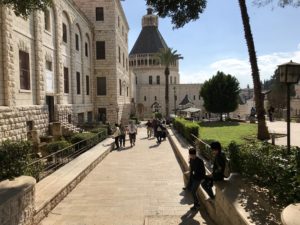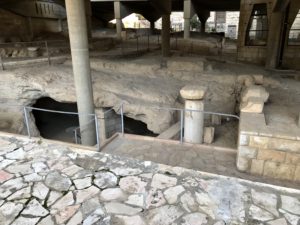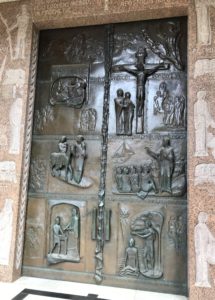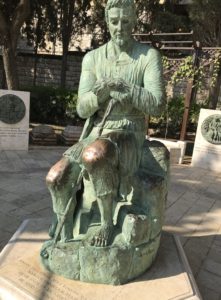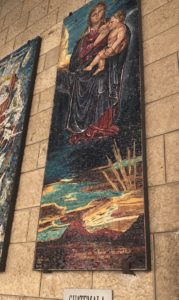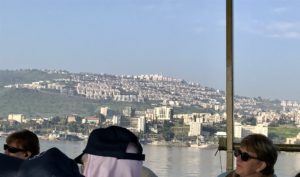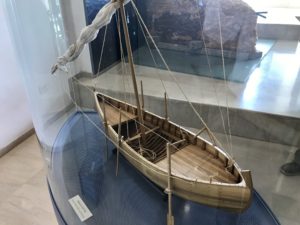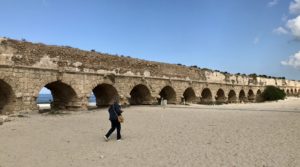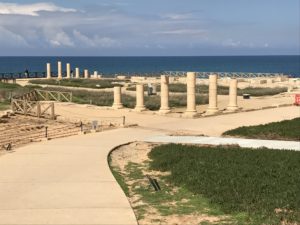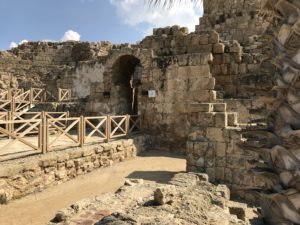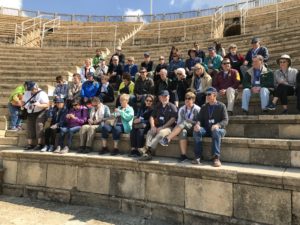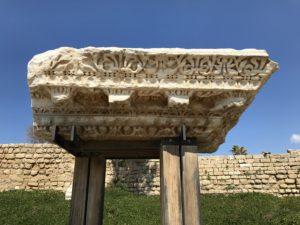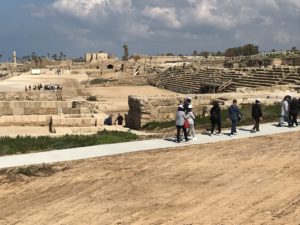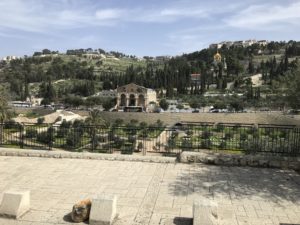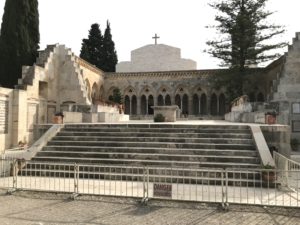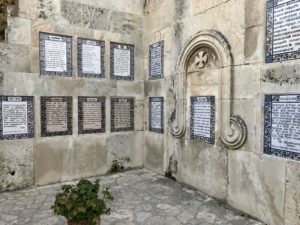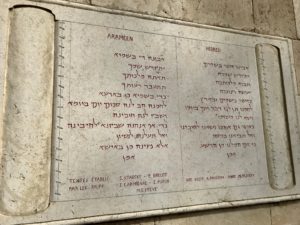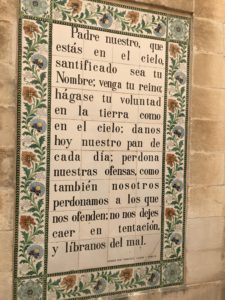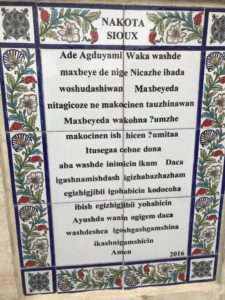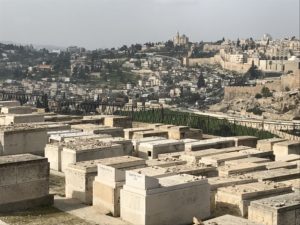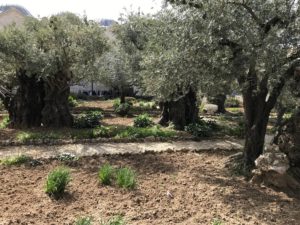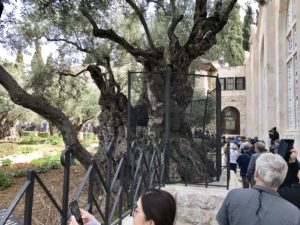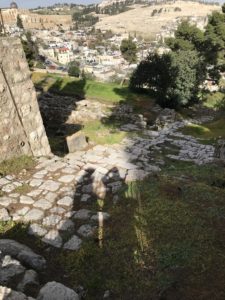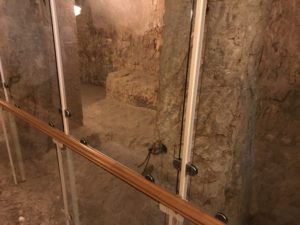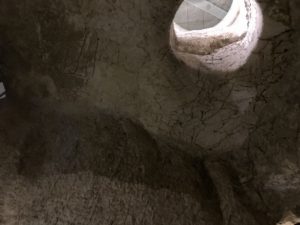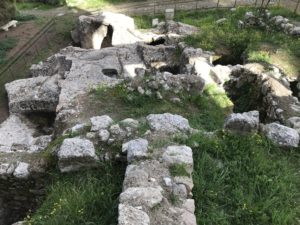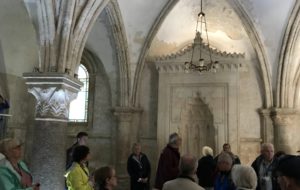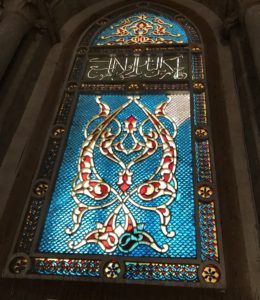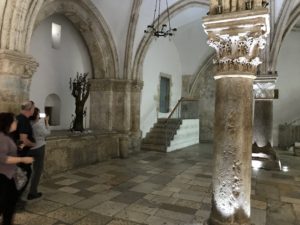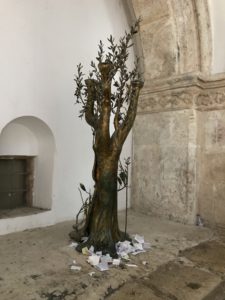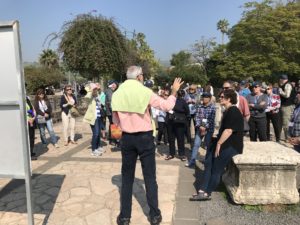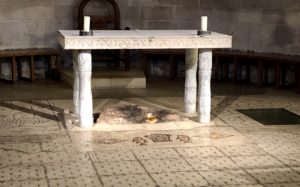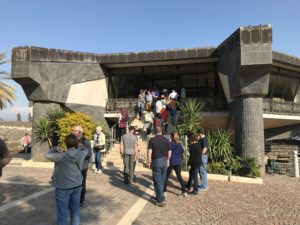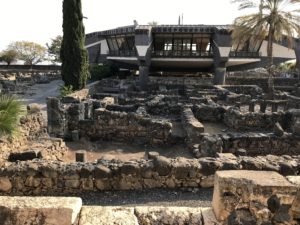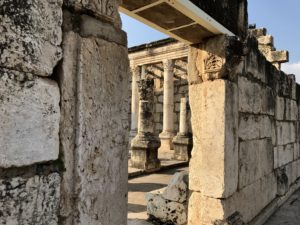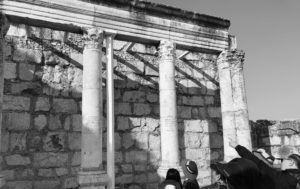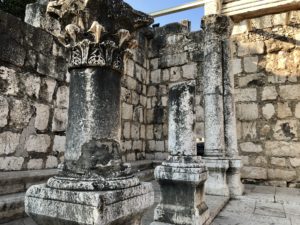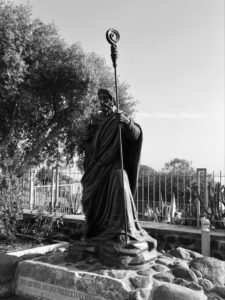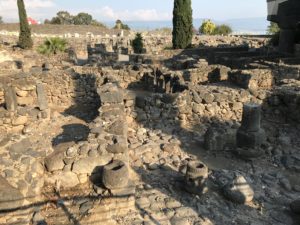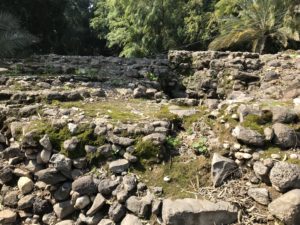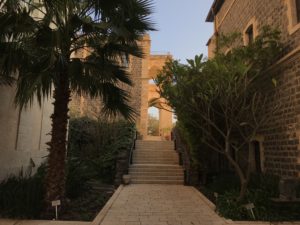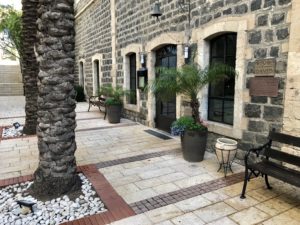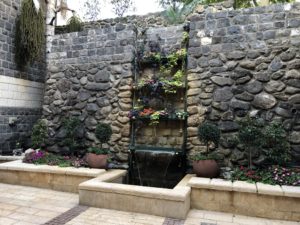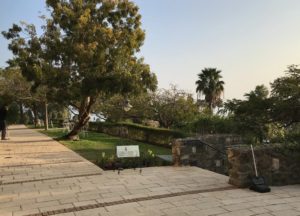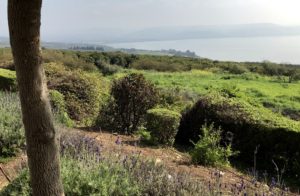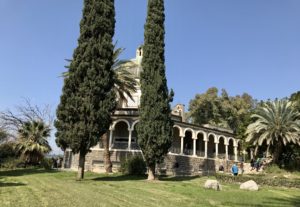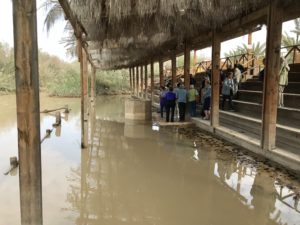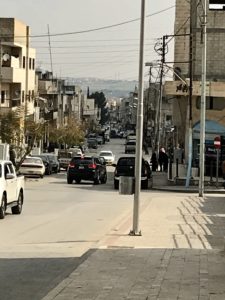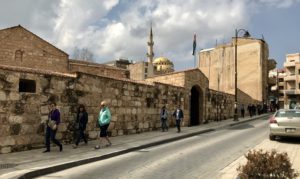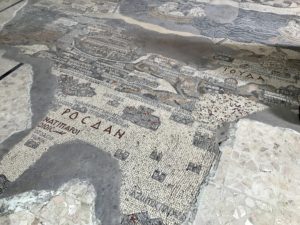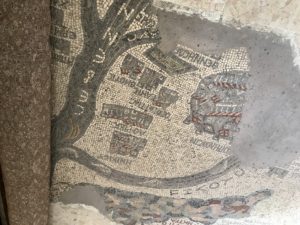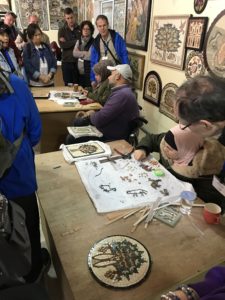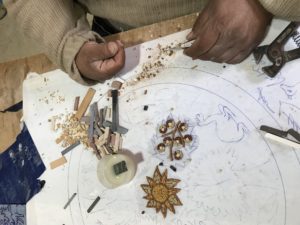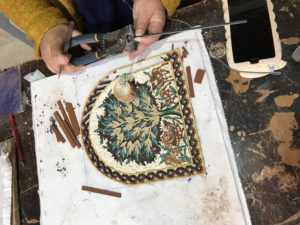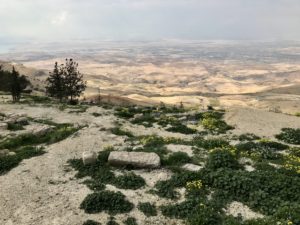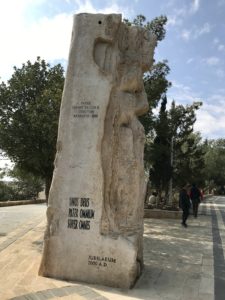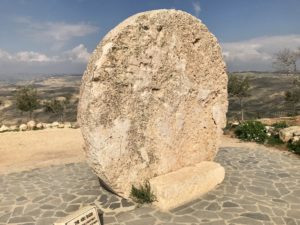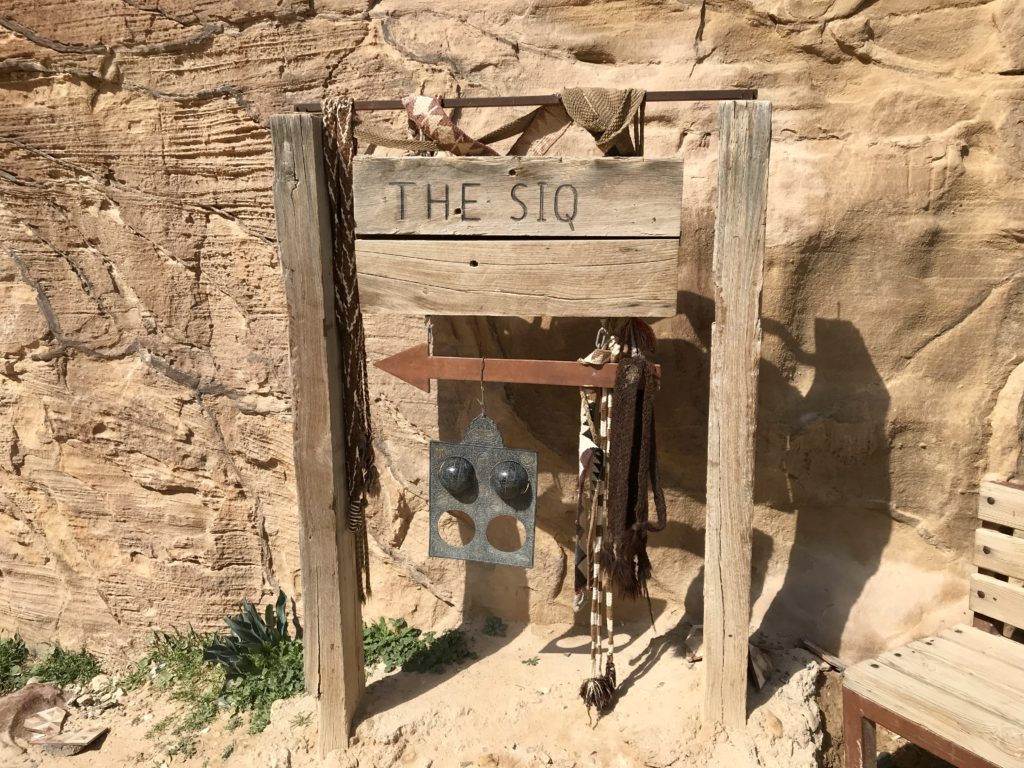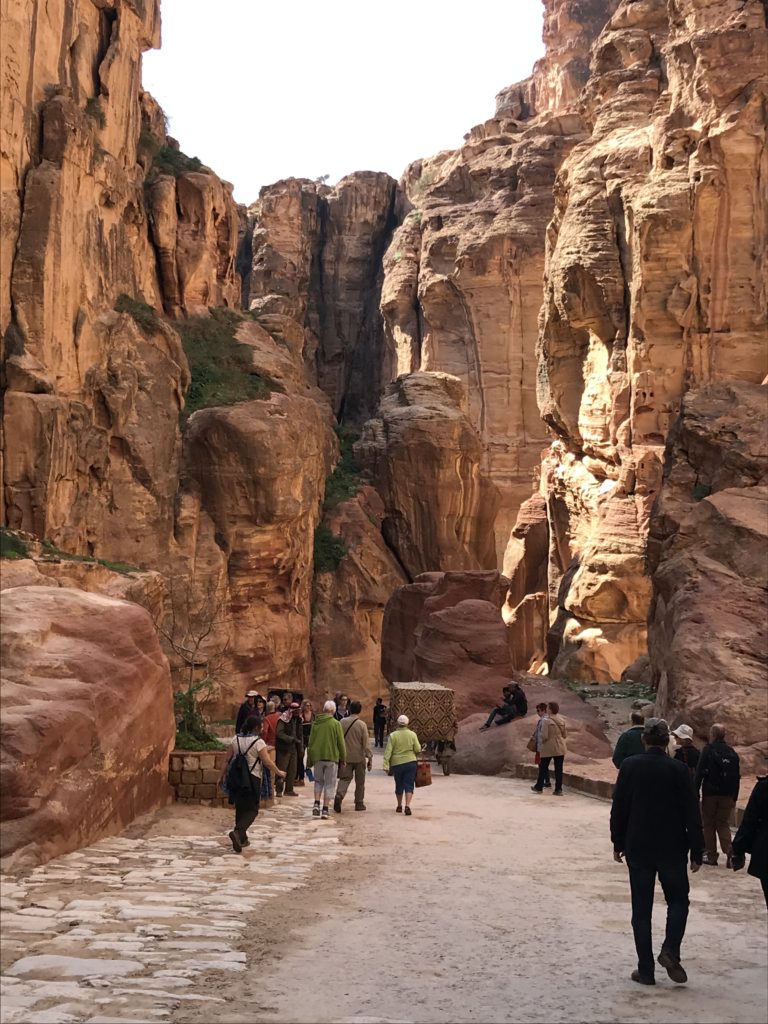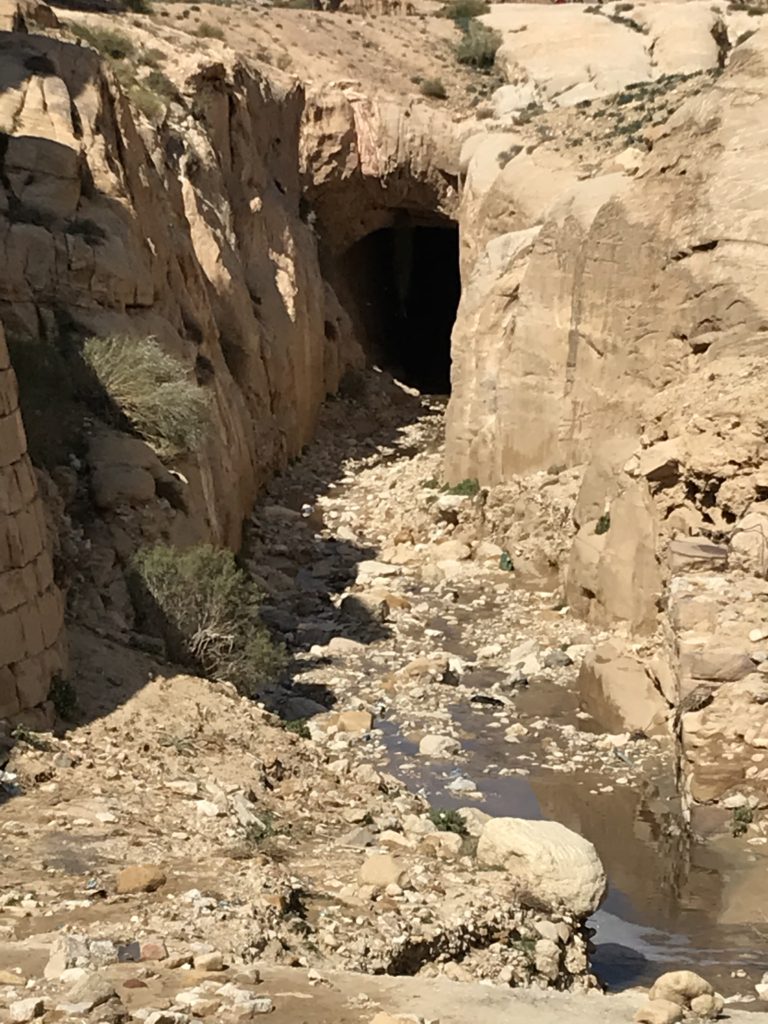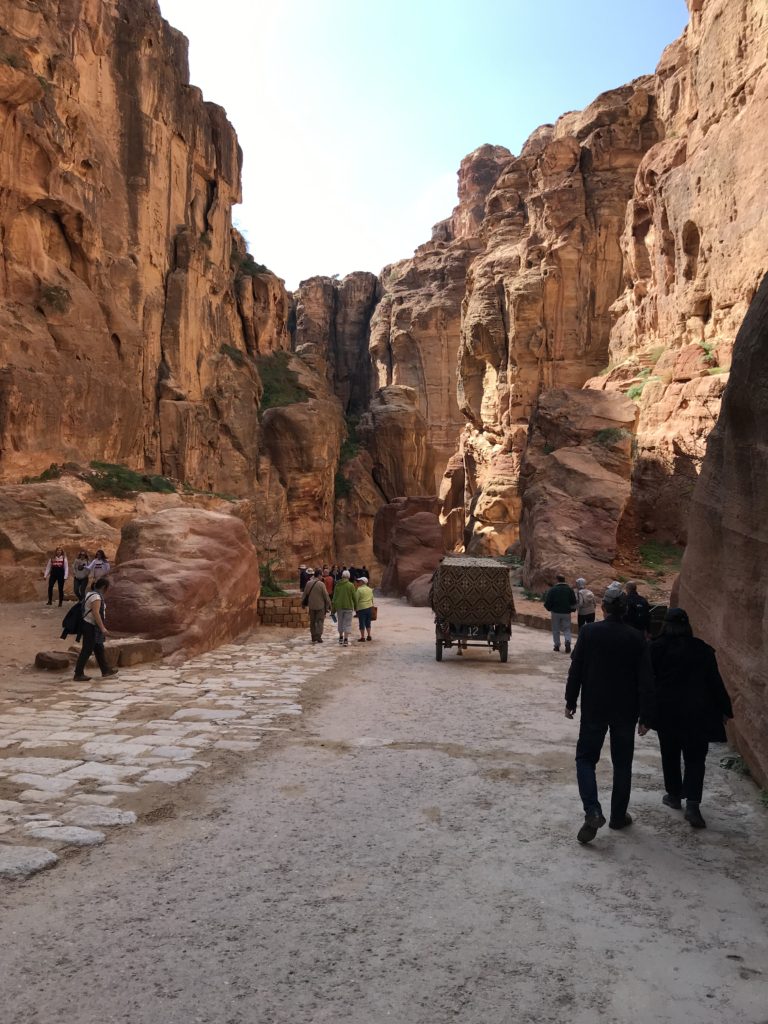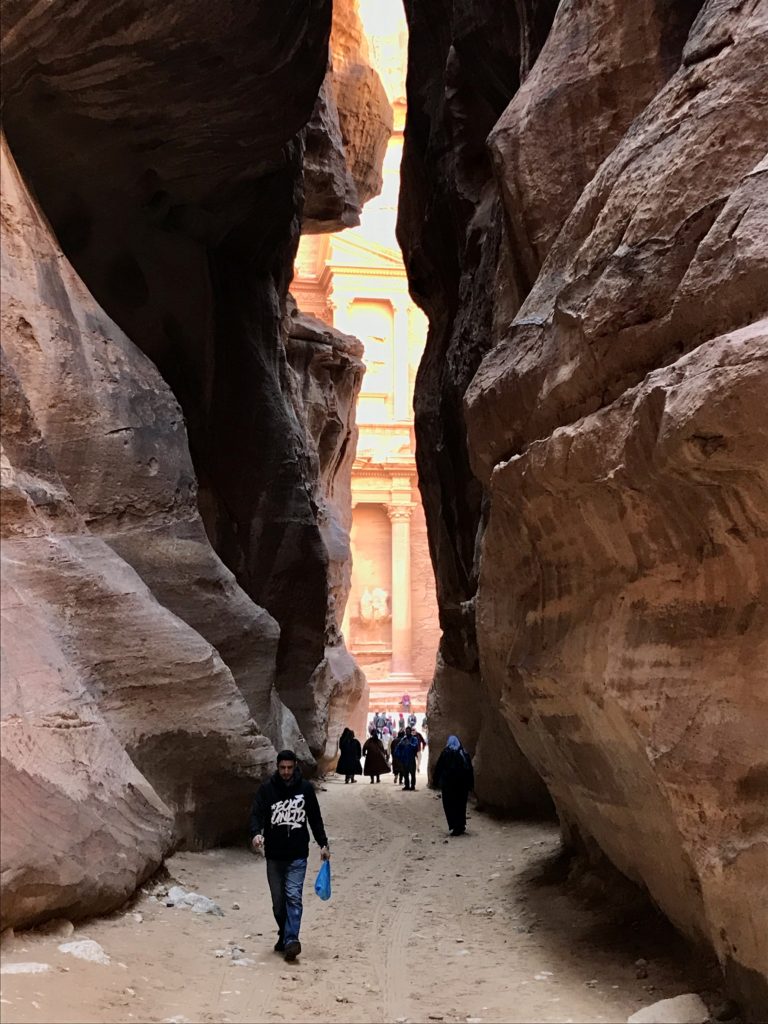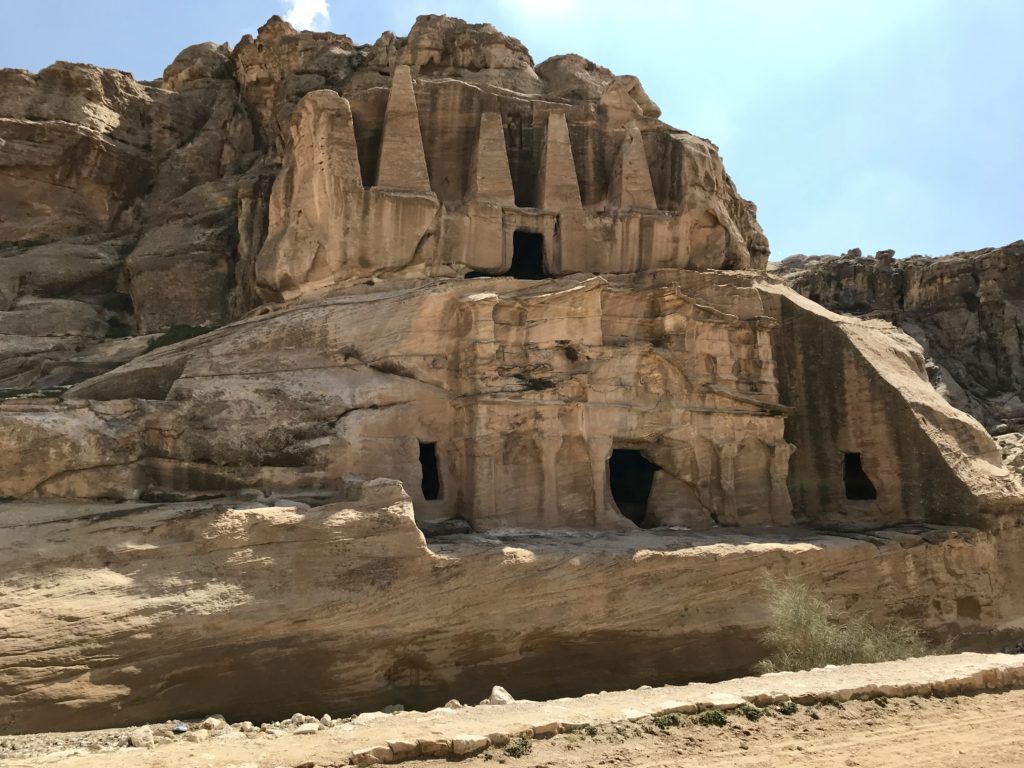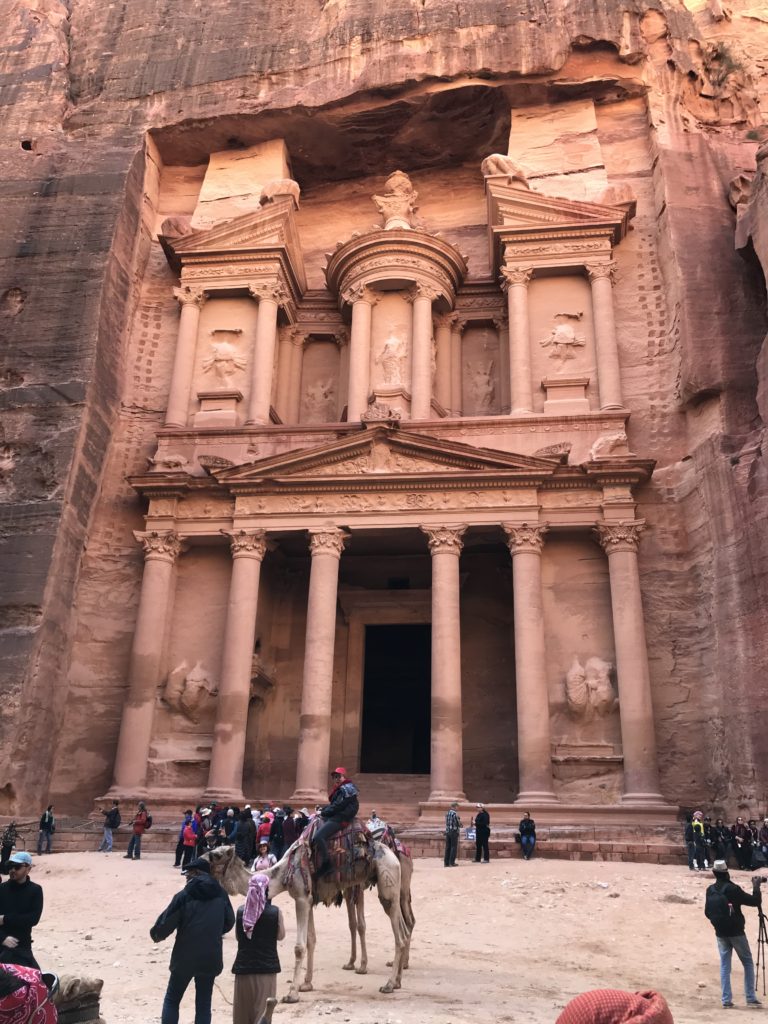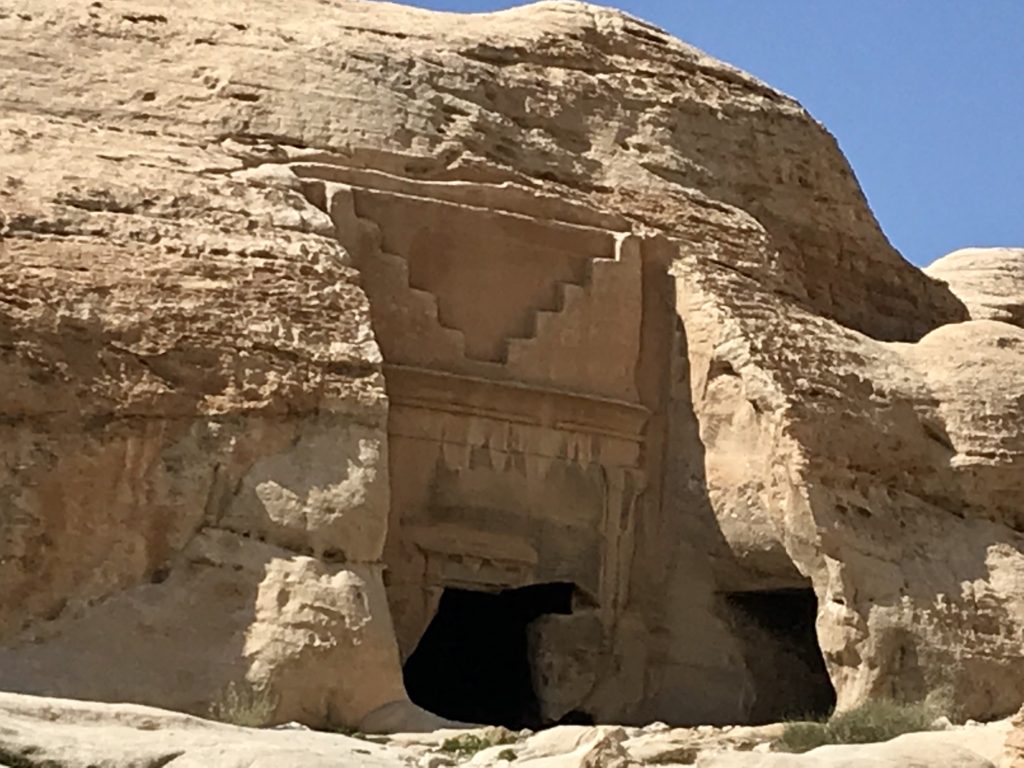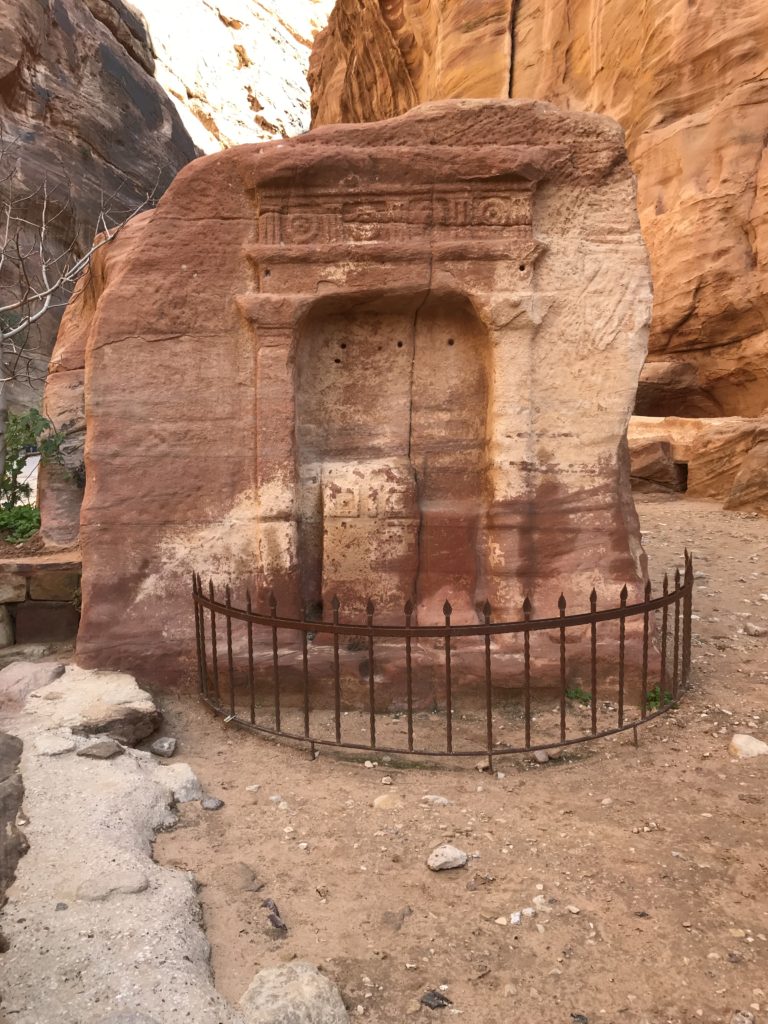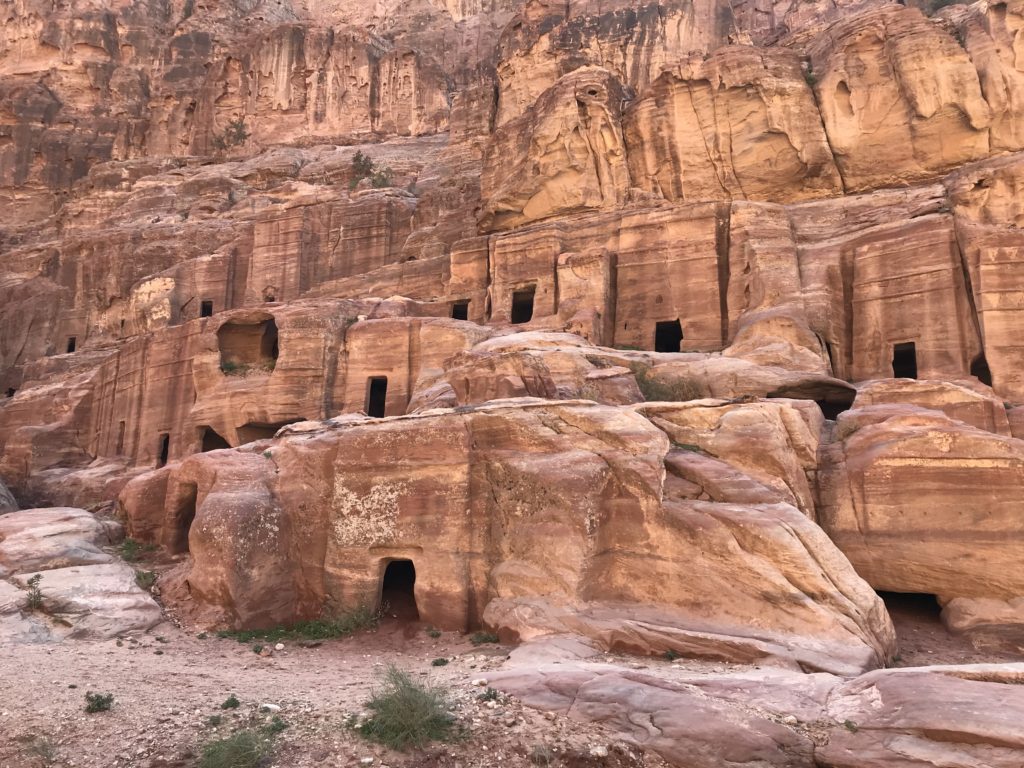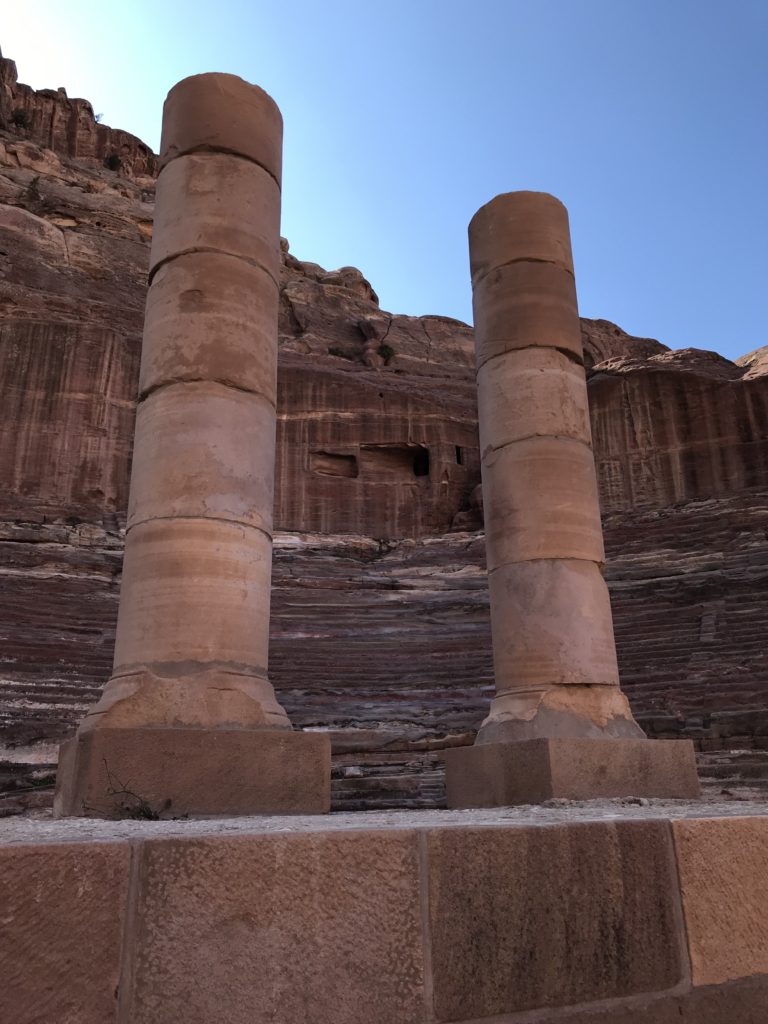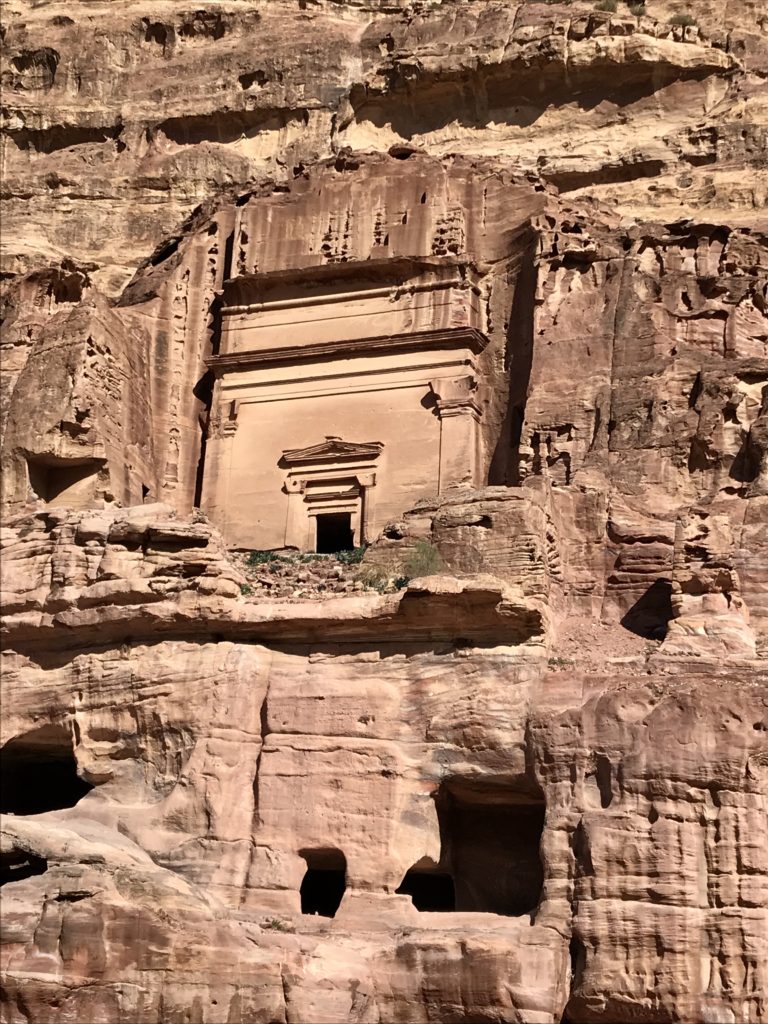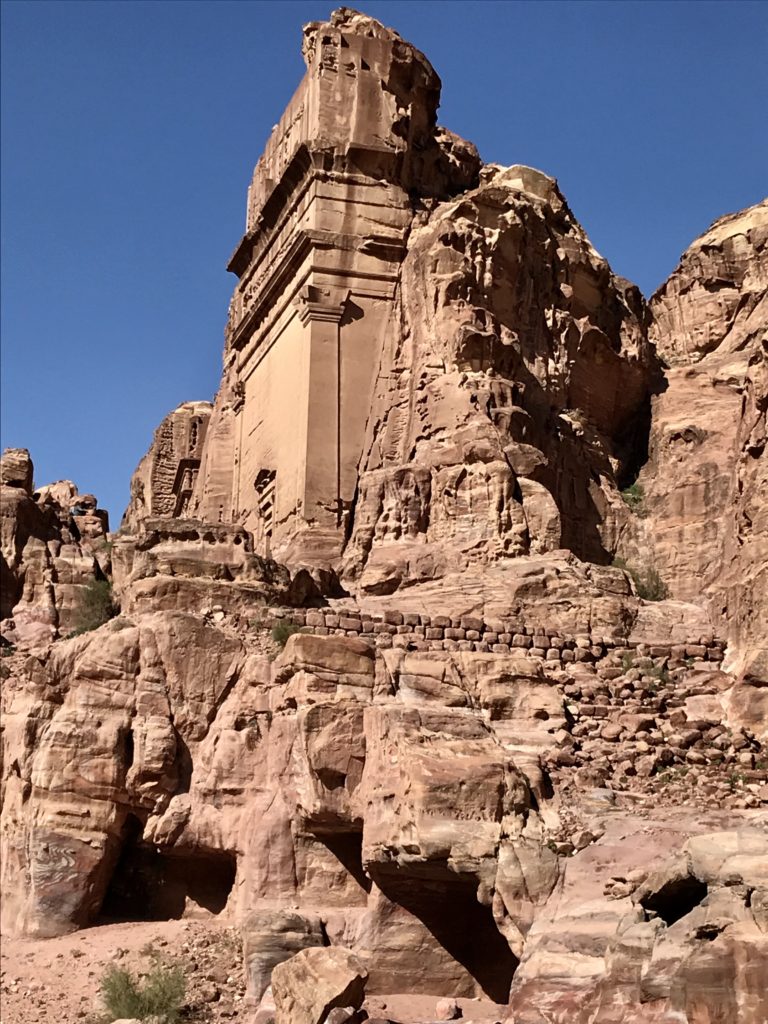I’ve already written a little about how Nazareth was the boyhood home of Jesus. Nazareth is the site of one of the most famous churches in all of the Holy Land. The Church of the Annunciation celebrates two important things in Christianity. One is the location of Mary’s home in Nazareth, and the other is the appearance of the angel Gabriel telling Mary she was to give birth to The Son of God.
Straight down this walkway you see the Church of the Annunciation. To the left of where I’m standing, on the same grounds is the Church of St. Joseph. Almost all of the imagery in St. Joseph’s Church is of the Holy Family. Some even refer to it as the Holy Family Church. There is a gallery of stain glass windows depicting the Holy Family. The one below was a favorite of mine. It is Mary and Jesus caring for an aging Joseph.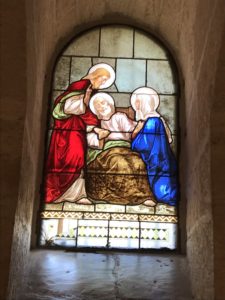 The circumstances of Joseph’s death are not known, but it’s fairly certain it was before Jesus began his ministry. There are no references to Joseph in the present in the Gospels.
The circumstances of Joseph’s death are not known, but it’s fairly certain it was before Jesus began his ministry. There are no references to Joseph in the present in the Gospels.
Annunciation marks the location of the home of Mary. The excavation projects in the Holy Land must number in the hundreds of thousands. I’ve already written how churches mark and protect the important sites of Christianity. These photos show the preservation of the home where Mary grew up. And the grotto marks the spot.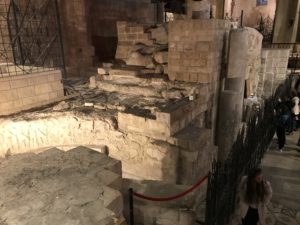
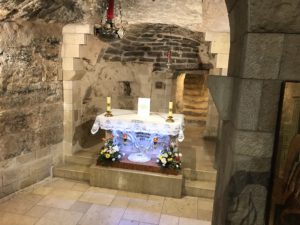
I mentioned earlier about all of the imagery in St. Joseph’s. You as my readers are at somewhat of a disadvantage when it comes to the subjects and sites of this particular trip. In my travels, I discovered just by circumstance, that I am not comfortable taking pictures of worship spaces. I have no judgement about people who do, it’s just a line that i stay on this side of. Pictures of things outside the confines of the sanctuary I’m fine with. The Churches in the Holy Land are particularly incredible in my mind. I mean going from church to church just keeps getting better and better. So in truth, on my site, you are missing out. The good news? You can find all kinds of photos on line of any of the places I mention.
Here are a few other things around the church grounds in Nazareth that drew me in. One of the side doors leading into the Church of the Annunciation. A gift of African art depicting Mary and the Angel Gabriel. A statue of Joseph with the patina worn off the knees from all of the people touching it.
One of my favorite areas was a gallery of icons from all different countries depicting the Annunciation. Not surprising, one of my favorites, Guatemala.
Our last stop of this day was Cana. The church in Cana commemorates the spot where the Gospel story of the Wedding Feast at Cana took place. The married couples in our group had an opportunity to renew their wedding vows. Not all of them opted in. Just kidding. 🙂
Thanks so much for being out there and following along. Take care.
